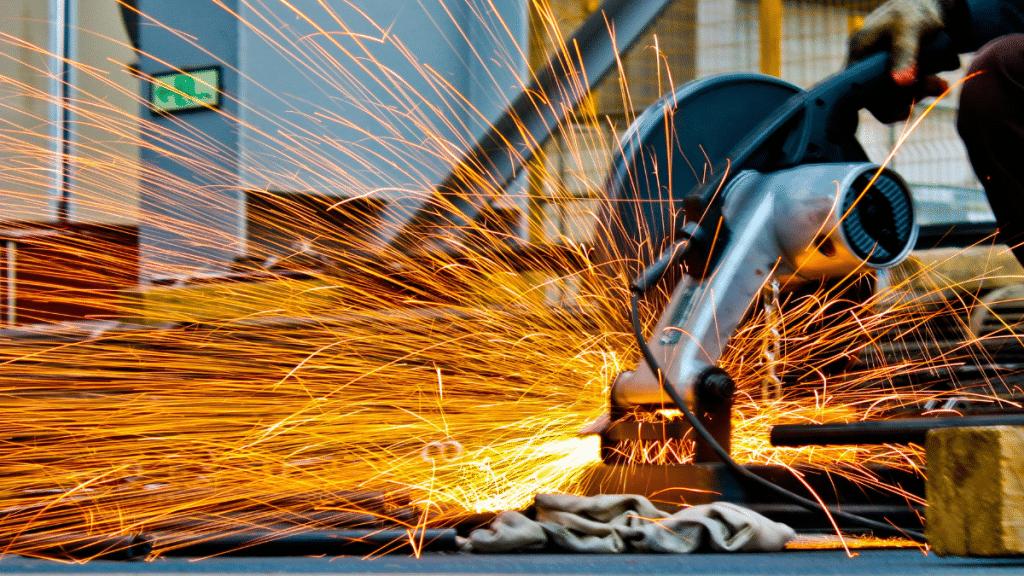Construction sites are high-pressure environments where tight schedules, heavy equipment, and constant movement demand sharp attention to detail. Managing such dynamic settings leaves little room for guesswork. With real-time field insights, firms gain the ability to detect and respond to hazards immediately—often before they escalate into costly incidents. This level of situational awareness significantly improves Construction Safety, which remains a top concern for every responsible contractor.
Let’s explore six specific safety risks you can eliminate by equipping your teams with immediate, actionable data from the field.
1. Blind Spots Around Equipment
Heavy machinery accidents remain one of the most common causes of injury on job sites. When workers or smaller equipment enter an operator’s blind spot, the consequences can be devastating. Traditional safety protocols, such as physical spotters or fixed mirrors, offer limited coverage and often rely on human consistency.
Real-time monitoring systems can give equipment operators live visual feeds or proximity alerts. These tools provide immediate awareness of any nearby obstacles or personnel, greatly reducing the chance of collision. Field insights also track high-traffic areas over time, helping site managers redesign layouts to minimize overlap between pedestrian and machinery paths.
2. Inadequate Response to Environmental Conditions
Changing weather, soil instability, or exposure to dangerous gases can threaten worksite safety within moments. Relying solely on forecasts or daily checklists won’t keep up with rapidly shifting conditions. Failure to adjust to environmental threats quickly can expose workers to slips, falls, respiratory hazards, or structural failures.
Connected sensors and wearable technology allow teams to assess real-time environmental factors. If dangerous levels of heat, wind, or air contaminants are detected, alerts can be pushed instantly to crews on the ground. This proactive approach allows supervisors to pause tasks, reassign workers, or deploy protective gear exactly when needed.
3. Complacency Around PPE Compliance
Protective gear requirements vary across tasks, yet it’s easy for workers to overlook protocols, especially during routine or repetitive jobs. A missed hard hat or unfastened harness might not seem critical at the moment but could prove disastrous if conditions change.
With smart wearables and visual tracking, field teams can now monitor PPE usage in real time. Supervisors receive alerts if someone enters a restricted zone without the required gear. Some systems also include coaching prompts to remind workers when to switch PPE based on their activity or location. This eliminates guesswork and reinforces safety habits at every stage of the day.
4. Delayed Hazard Communication
Without real-time communication, even minor hazards can become major problems. Misplaced tools, damaged scaffolding, or newly exposed wiring often go unreported for hours—sometimes until it’s too late. Waiting for end-of-day summaries or incident logs does little to protect the current shift.
Real-time reporting apps let workers submit safety observations, images, and warnings directly from the field. These updates flow instantly to safety managers, who can act before the situation worsens. Sharing hazard information across the team at the moment creates a culture of accountability and prevents repeated exposure to the same risks.
5. Overlooked Near Misses and Patterns
Many construction firms don’t analyze near-miss incidents closely enough. When these events aren’t logged or reviewed immediately, patterns go unnoticed. This leads to missed opportunities for preventive action and a false sense of security on site.
Real-time data collection helps teams capture even minor incidents as they occur. Wearables and site sensors automatically log locations, time stamps, and involved personnel. Reviewing this data regularly reveals hotspots, timing trends, and task-specific risks. Teams can then redesign processes or schedule toolbox talks to correct behavior before an actual injury occurs.
6. Miscommunication Between Teams
Multiple subcontractors, supervisors, and laborers operate in different parts of the site, often with different goals and timelines. If one group isn’t aware of a delay, a new hazard, or a schedule change, their work can unintentionally put others at risk.
Real-time collaboration platforms sync updates across all site personnel. Instead of relying on morning meetings or radio check-ins, everyone receives instant updates through mobile apps. If a crane becomes unavailable or a section of flooring is unsafe, the information reaches everyone before work begins in that area. This eliminates assumptions and keeps teams aligned throughout the day.
Take Action to Strengthen Site Safety
The construction industry has no shortage of tools, but only a few directly impact worker well-being at the moment. Real-time field insights don’t just improve awareness—they drive immediate decision-making that prevents injuries and saves lives. If your firm is serious about improving Construction Safety, investing in these technologies is no longer optional. Equip your teams with the tools to act fast and stay safe.
Ready to reduce risk on every job site? Start evaluating your current safety tools and explore platforms that deliver real-time field insights today.
